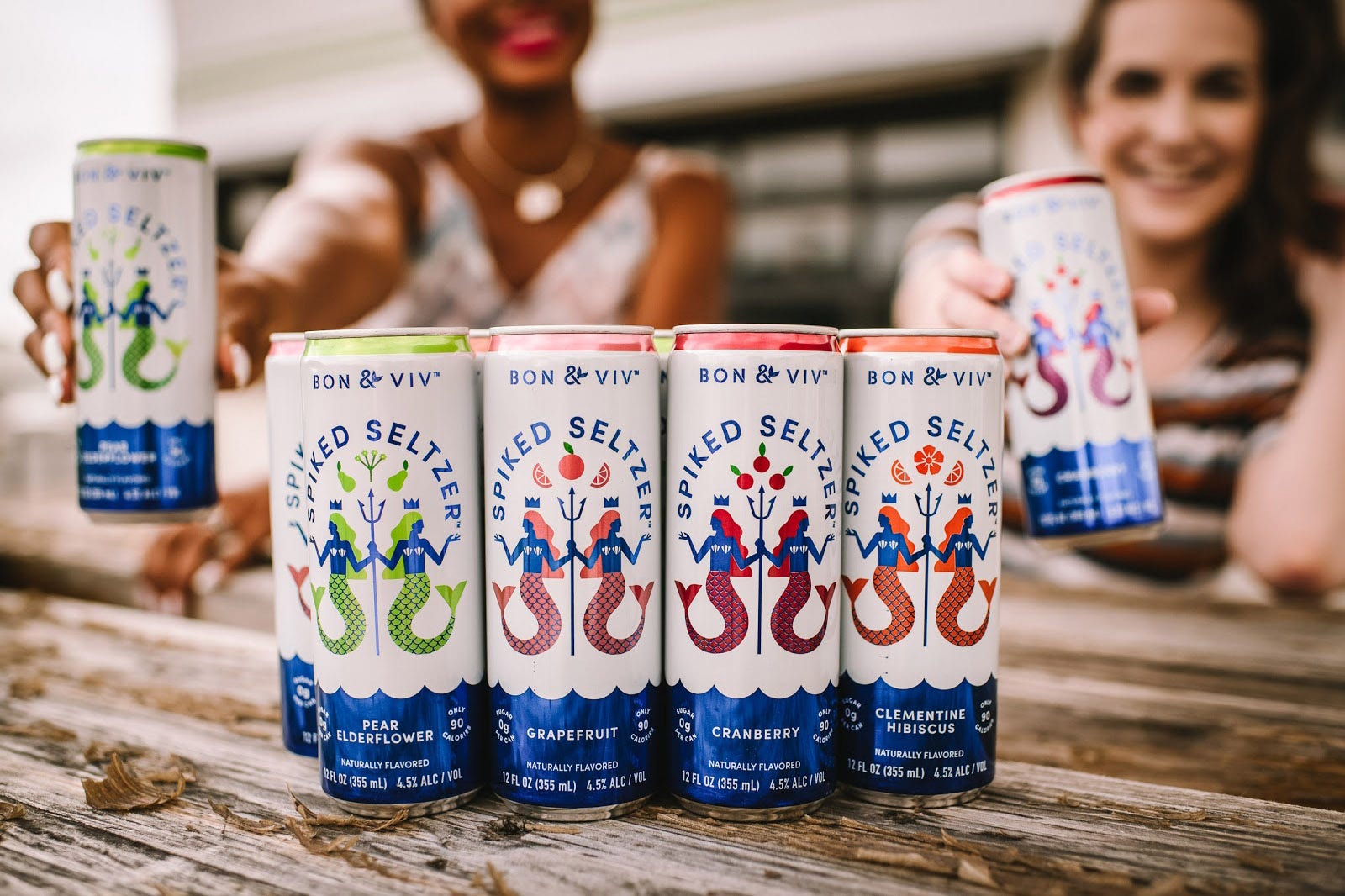If you haven’t seen a White Claw in someone’s hand, in a meme or emblazoned with a hashtag, you’d likely be in the minority. The hard seltzer market has hit hard, as the fizzy spiked drink is sipped in record numbers on the beach, on the couch and at parties. But is this trend here to stay, or just the beverage industry’s latest gimmick? Here’s the breakdown.
So, what is hard seltzer?
Hard seltzer is what it sounds like, a seltzer spiked with alcohol. At their most basic, hard seltzers have three ingredients: carbonated water, alcohol and flavoring. Many brands infuse their seltzers with alcohol from fermented cane sugar. Some also use malted barley, like the throwback spiked seltzer-like beverage, Zima, which was created in 1993 by Coors.
Behind hard seltzer’s popularity
As non-alcoholic seltzer has risen in sales year after year, hard seltzer has skyrocketed in tandem. By 2021, some analysts predict hard seltzer could be a $2.5 billion industry. It’s experienced market growth of 200% so far this year alone.
But why the sudden burst of popularity? Some say hard seltzer hit at just the right time, and that the product appeals to a wide variety of people. Another selling point: most hard seltzers are low in calories and fall between 90–110 calories per can. Many also tout low sugar content, which often ranges from zero to 4 grams. And as consumers gravitate increasingly toward low-alcohol beverages, several hard seltzers contain only 4–6% alcohol by volume (abv).
Most seltzers also capitalize on the convenience of cans, a trend not lost on the wine industry. This could also appeal to beer drinkers who seek something different, spirits lovers who want something lighter, and casual drinkers who don’t like the taste of strong alcohol or want something with a moderate abv.
“Hard seltzer is at the intersection of several consumer trends right now,” says Lara Crystal, co-founder/co-CEO of Minibar Delivery. “We’ve observed increasing demand for lower-alcohol products and healthier, natural options, along with a surge in ready-to-drink beverages. [The past] summer has seen them explode in popularity, as they appeal to drinkers that previously would have considered beer, wine or liquor.”
The hard seltzer brands you should know
So what names do you need to know when it comes to navigating your alcohol aisle? Here, some of the standout brands in the hard seltzer scene.

White Claw Hard Seltzer
It’s the brand that’s launched a million memes. White Claw now commands 50% of market share in sales. This isn’t the company’s first foray into the beverage world, though. Parent company Mark Anthony Group and its founder, Anthony von Mandl, were the minds behind Mike’s Hard Lemonade. Von Mandl is also intimately connected to the wine world as the proprietor of Mission Hill winery in the Okanagan Valley.
White Claw comes in five fruit flavors: Mango, Natural Lime, Black Cherry, Ruby Grapefruit and Raspberry. It also just launched a “pure” or unflavored version, though White Claw claims it to be a limited-edition offering.

Truly Hard Seltzer
The other behemoth of the hard seltzer market is Truly, owned by Boston Beer Company, the parent company of Sam Adams. It’s second only to White Claw in terms of sales and offers 13 different styles that include a variety of berry, citrus and tropical fruit options. All are made with no artificial flavors or sweeteners.
Smirnoff Sparkling Seltzer
Smirnoff got into the hard seltzer game in 2016, with four fruit flavors and four rosé wine-influenced offerings. Smirnoff’s current offerings include Piña Colada, Berry Lemonade, Cranberry Lime and Watermelon. Its wine-themed line includes Raspberry Rosé, White Peach Rosé, Strawberry Rosé and Pink Apple Rosé. Unlike other spiked seltzers that use cane sugar to create alcohol, both of Smirnoff’s lines are malt-based beverages.

Bon & Viv Spiked Seltzer
Bon & Viv touts that it was the first hard seltzer, launched as SpikedSeltzer in 2013. It was bought by Anheuser-Busch InBev in 2016, which rebranded the product. One of the better-known brands in the spiked seltzer world, it offers seven flavors that include Black Cherry Rosemary and Pear Elderflower.
Like White Claw, Bon & Viv have added a “classic” flavor to their lineup, essentially an unflavored alcoholic seltzer that can be sipped as-is or used as a base for your own cocktail creations. It’s also the official spiked seltzer of the National Football League, which means it will be available on game day in stadiums around the country.
 SVEDKA Spiked Premium Seltzer
SVEDKA Spiked Premium Seltzer
Svedka launched its spiked seltzer in 2018, with three original flavors: Tangerine Hibiscus, Strawberry Elderflower and Cucumber Basil. The flavors are great on their own but work particularly well as a base for a sparkling cocktail.

Henry’s Hard Sparkling Water
Owned by MillerCoors and launched in 2017, Henry’s contains zero sugar, 88 calories and 4.2% abv. It comes in six flavors: Blueberry Lemon, Pineapple, Lemon Lime, Passion Fruit, Peach Mango and Strawberry Kiwi.
Other hard seltzers to seek
Nauti, Brigg’s and Press are among other notable brands, and more producers jump on the bandwagon each month. Natural Ice has launched its own version, Natural Light Seltzer, along with Pabst Blue Ribbon with its Stronger Seltzer. Showing it’s not just brewers getting in on the trend, non-alcoholic seltzer brand Polar has also made a foray into the market with Arctic Summer, launched this spring. So far, it’s the only hard seltzer actually made by a traditional seltzer company.
As the colder months roll in, seltzer sales may dip a bit, but the rapid growth speaks for itself. Hard seltzer seems to have the potential to stick around for a long time.
Last Updated: May 5, 2023















